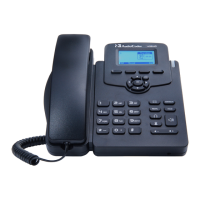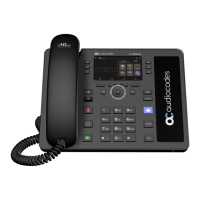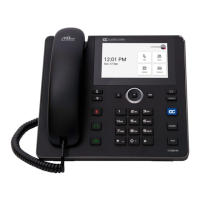Administrator's Manual 17. Configuring SIP Settings
Version 2.2.8 97 400HD Series IP Phones
17.2.1 Configuring Proxy Redundancy
The Redundant Proxy feature allows the configuration of a backup SIP proxy server to
increase QoS stability. Once this feature is enabled, the phone identifies cases where the
primary proxy does not respond to SIP signaling messages. In these scenarios, the phone
registers to the redundant proxy and the phone seamlessly continues normal functionality,
without the user noticing any connectivity failure or malfunction with the primary proxy.
The Redundant Proxy feature can operate in one of the following modes:
Asymmetric mode: The primary proxy is assigned a higher priority for registration than
the redundant proxy. Once the phone is registered to the primary proxy, it sends
keep-alive messages (using SIP OPTIONS messages) to the primary proxy. If the
primary proxy does not respond, the phone registers to the redundant proxy, but
continues sending keep-alive messages to the primary proxy. If the primary proxy
responds to these keep-alive messages, the phone re-registers to the primary
proxy.
Symmetric mode: Both proxies are assigned the same priority for registration. Once
the phone is registered to a proxy, it sends keep-alive messages to this proxy. The
phone switches proxies only once the proxy to which it has registered, does not
respond.
For more information see the [voip/signalling/sip/redundant_proxy/symmetric_mode]
description in the SIP Proxy Server Redundancy Parameters table below.
Proxy Redundancy can be configured using the Web interface or Configuration file.
To configure Proxy Redundancy using the Web interface:
1. Access the Signaling Protocol page (Configuration tab > Voice Over IP menu >
Signaling Protocols).
Figure 17-3: Web Interface - Proxy Redundancy
2. Configure the Proxy Redundancy parameters using the table below as reference, and
then click Submit.

